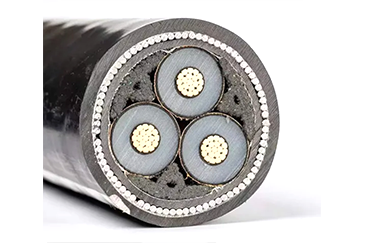Knowledge of fire prevention of cable laying
Time of Release:
2022-11-26
Source:
Author:
First, choose flame retardant wire and cable
Flame retardant wire and cable fire prevention mechanism: under the heat action of combustion reaction, the flame retardant located in the condensed phase thermal decomposition and heat absorption, so that the temperature rise in the condensed phase slows down, delays the thermal decomposition rate of the material, and at the same time, releases the chain reaction free radical blocker, so that the branch of the flame and chain reaction is interrupted, the gas phase reaction rate is slowed down, the temperature in the condensed phase is prevented, and the fire prevention effect is achieved;
Classification and selection of flame retardant wire and cable: flame retardant cable mainly includes ordinary flame retardant wire and cable, halogen-free low-smoke flame retardant cable, low-halogen low-smoke flame-retardant cable, fire-resistant cable, these products have different manufacturing technologies, performance characteristics, and different application ranges.
2. Scientific design and installation
Plugging: Fireproof plugging is the use of fireproof plugging materials to block the gap where the cable crosses to prevent the cable from igniting and igniting. The connection between the cable trench and the electrical panel, box, cabinet, partition wall, floor hole, etc. need to be flame retardant plugged. The cable fire door should be closed for a long time, the gap between the cable fire plate and the cable trench cover plate should be closed, and the cable laying density should be sealed with soft plugging material;
Partition: The fireproof partition wall can divide the long cable tunnel and cable channel into small sections, reduce the fire interval, and use fire-resistant partitions, aluminum silicate fiber felts, fireproof plugs, fireproof coatings, etc. The fireproof partition wall is made of slag cotton, which is used with the fire door in the tunnel;
Coating: Applying fireproof coating can avoid the ignition of the cable after fire, the fireproof flame retardant belt is convenient to construct, not easy to fall off, strong adaptability, and cheap price. In the part from the cable entering the cabinet to the terminal head, paint all cables twice with fireproof paint or fire retardant tape in the area of 2~3 meters on both sides of the fireproof partition wall.
3. Set up fire prevention facilities
Set up fire alarm system: according to the actual situation, select the appropriate alarm probe and the alarm system suitable for the characteristics of the cable layer, at present, the more widely used in cable trenches and pipeline wells is linear (or cable) temperature detector;
High-pressure water spray fire extinguishing: in cable corridors and cable dense areas, high-pressure water spray fire extinguishing method should be adopted, in order to make water spray fire extinguishing play a timely and effective role, it is necessary to configure a high-sensitivity monitoring and control system;
Strengthen the ventilation of the cable layer (well): use the natural ventilation conditions, set up vents in the outer wall of the cable layer as much as possible, and at the same time establish a mechanical smoke exhaust system with uninterrupted power supply, so that the smoke exhaust fan can be opened through automatic alarm linkage in the early stage of the fire.
4. Standardize daily management
Maintain good operating condition: prevent cable short circuit, open circuit arc fire caused by cable internal insulation defects, aging, moisture, damage and other cable own failures, timely find poorly insulated cables, and withdraw them from operation;
Maintain a good operating environment: it is strictly forbidden to flow into cable trenches and cable tunnels from the exhaust gas and wastewater of the thermal system;
Strengthen the monitoring and management of the cable head: the cable head is affected by many factors is the weak link of cable insulation, and the power cable terminal head and intermediate joint placed in the cable trench, cable tunnel, cable slot box, and cable mezzanine must be registered, strengthen supervision, and avoid hot fire of the cable hair in operation.
Related information

Residential Wiring Projects: The Essential Role of 300/500V Electric Wires
Understanding 300/500V Electric Wires in Residential Wiring Projects When undertaking residential wiring projects, the choice of electric wire is pivotal. Among the various types of wires available, **300/500V electric wires** play a crucial role in ensuring safety, efficiency, and compliance with electrical standards. This article delves into the significance of 300/500V wires, their applications
2025-11-15


Understanding 450/750V House Use Electric Wires: Essential Insights for Professionals
When it comes to residential electrical installations, the choice of wiring is crucial for ensuring safety, efficiency, and compliance with regulatory standards. Among the various types of wires available, 450/750V house use electric wires are particularly common in residential settings. These wires are designed to handle the voltage levels typically found in household electrical systems, making t
2025-11-12


The Role of 26/35kV Aluminum Power Cables in Smart Grid Technology
The Role of 26/35kV Aluminum Power Cables in Smart Grid Technology Table of Contents 1. Introduction to Smart Grids and Power Cables 2. Importance of 26/35kV Aluminum Power Cables 3. Benefits of Using Aluminum for Power Cables 4. Applications of 26/35kV Aluminum Power Cables in Smart Grids 5. Technical Specifications of 26/35kV Aluminum Power Cables 6. Challenges in Implementing 26/35
2025-11-09




